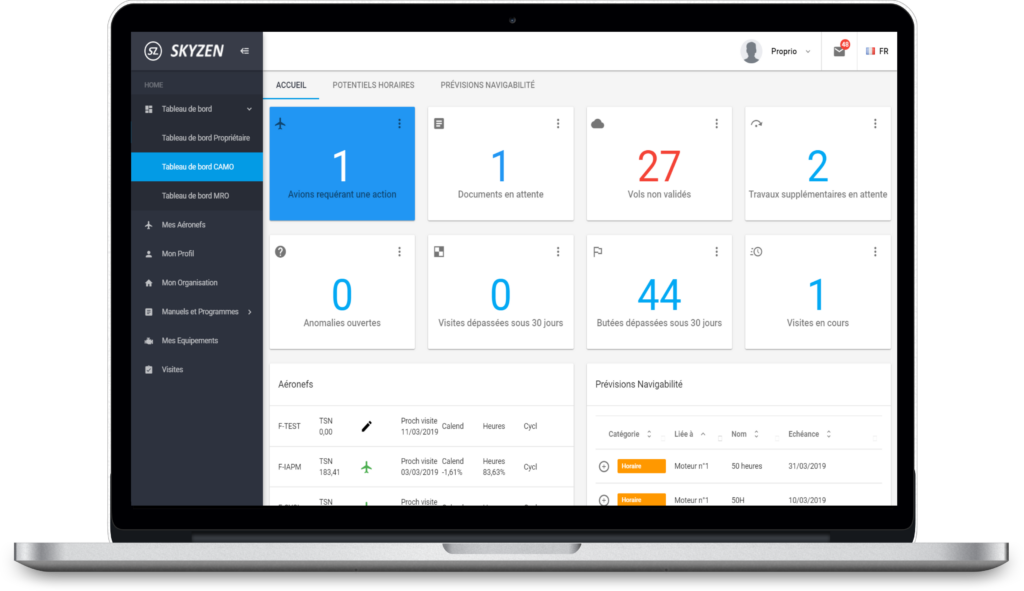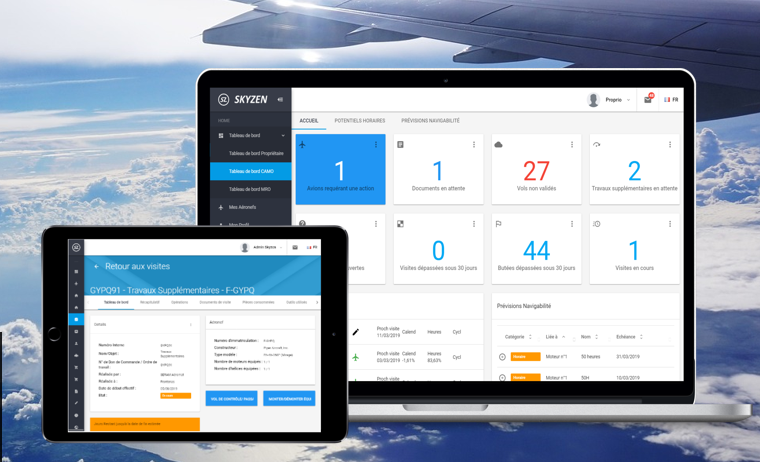In the dynamic world of aviation and industrial maintenance, efficiency and accuracy are paramount. To ensure smooth operations and compliance with regulatory standards, organizations rely heavily on Maintenance Information Systems (MIS). Let’s delve into what these systems entail and the myriad benefits they offer.
What is a Maintenance Information System (MIS)?
A Maintenance Information System, commonly abbreviated as MIS, is a sophisticated software solution designed to streamline and optimize maintenance operations for various industries, including aviation, manufacturing, transportation, and more. At its core, an MIS serves as a centralized hub for managing all aspects of maintenance activities, ranging from scheduling routine inspections to tracking inventory and analyzing maintenance performance metrics. For example, Skyzen is our MIS offering solution for aviation. You can also find other solutions such as LTB400.

Key Features and Functionality
Maintenance Information Systems boast an array of features tailored to meet the complex demands of modern maintenance management. These features typically include:
- Work Order Management: Efficiently create, assign, and track work orders for maintenance tasks, ensuring timely completion and resource allocation.
- Preventive Maintenance Scheduling: Establish and manage maintenance schedules based on equipment usage, time intervals, or predefined criteria to minimize downtime and prevent unexpected failures.
- Inventory Control: Track spare parts, consumables, and tools in real-time, optimizing inventory levels and ensuring availability when needed.
- Asset Management: Maintain a comprehensive database of all assets, including equipment specifications, maintenance history, and warranty information, facilitating informed decision-making and lifecycle management.
- Compliance and Regulatory Reporting: Stay compliant with industry regulations and standards by generating comprehensive reports, audit trails, and documentation for regulatory authorities.
- Resource Planning and Allocation: Efficiently allocate resources, including personnel, materials, and equipment, to maximize productivity and minimize costs.
- Data Analysis and Performance Metrics: Analyze maintenance data to identify trends, predict equipment failures, and optimize maintenance strategies for enhanced performance and reliability.
Benefits of Using a Maintenance Information System
Implementing a Maintenance Information System offers numerous benefits to organizations across various industries:
- Improved Efficiency: Streamline maintenance workflows, reduce paperwork, and automate routine tasks, resulting in increased operational efficiency and reduced downtime.
- Enhanced Asset Reliability: Proactively monitor equipment health, identify potential issues early, and implement preventive maintenance measures to extend asset lifespan and reliability.
- Cost Savings: Optimize resource utilization, minimize inventory holding costs, and reduce unplanned downtime, leading to significant cost savings over time.
- Regulatory Compliance: Ensure adherence to industry regulations and standards by maintaining accurate records, generating compliance reports, and facilitating audits with ease.
- Data-Driven Decision Making: Harness the power of maintenance data analytics to make informed decisions, optimize maintenance strategies, and drive continuous improvement initiatives.
- Increased Safety and Compliance: Enhance workplace safety, mitigate risks, and improve compliance with safety regulations by implementing standardized maintenance procedures and protocols.
- Enhanced Customer Satisfaction: Minimize service disruptions, improve asset availability, and deliver superior service to customers, resulting in increased satisfaction and loyalty.
In conclusion, Maintenance Information Systems play a pivotal role in modern maintenance management, offering a comprehensive suite of tools and functionalities to streamline operations, enhance reliability, and drive organizational success. By leveraging the benefits of an MIS, organizations can achieve operational excellence, ensure regulatory compliance, and stay ahead of the competition in today’s fast-paced business environment.

